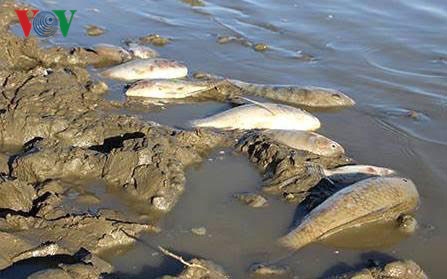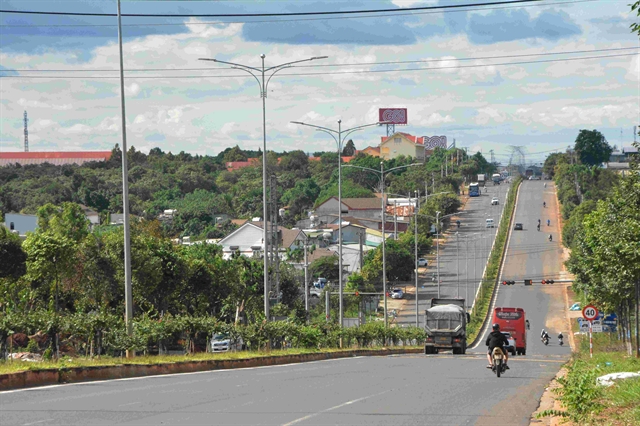 Environment
Environment

Some three tonnes of dead fish have been collected from lakes and dams in this central province’s Tân Kỳ District over the last few days, according to a local official.
 |
| Fish die en masse in lakes and dams in the central province of Nghệ An’s Tân Kỳ District. – Photo vov.vn |
NGHỆ AN — Some three tonnes of dead fish have been collected from lakes and dams in this central province’s Tân Kỳ District over the last few days, according to a local official.
Nguyễn Duy Kết, the Secretary of Giai Xuân Commune’s Party Committee, said fish had died en masse following heavy rains last Friday.
Earlier, the prolonged drought caused the water levels in lakes and dams in the locality to fall dramatically. The largest volumes of dead fish were recorded at the Vinh, Lở and Mai Lý dams.
Local residents have collected the fish for drying or to feed their pigs.
The cause of the mass deaths is being investigated.
In related news of the Formosa widespread fish deaths in four central provinces, scientists are testing the sediment on the sea bed to determine whether it contains residual toxins. Based on the results of the survey and their assessment, management agencies will work with the scientists to create a plan to deal with pollution and restore the marine ecosystem.
According to the scientists, among the three main contributing factors for the fish deaths, phenol can decompose quite quickly, iron oxide is harmless to human and sea creatures while cyanide is an extremely toxic substance, and not much research has been done on this substance found in sea bed sediment.
If the concentration of this substance in the sediment is too high, the contaminated sediments may need to be sucked away for processing on shore. This is a costly method of resolving the problem.
Associate professor Vũ Thanh Ca, former director of the Institute for Sea and Islands Research, said the sea could clean itself. The concentration of toxic chemicals will gradually decrease over time.
“If the results show that the concentration of toxic chemicals is not high, we can leave the sea to clean itself,” he said, adding that this approach was less expensive.
Võ Sĩ Tuấn, director of Nha Trang Oceanography Institute, suggested that besides letting the sea clean itself, it was necessary to grow coral, thereby creating a favourable environment for fish and other organisms to develop.
Đào Trọng Tứ, director of the Centre for Sustainable Water Resources and Climate Change, said natural and artificial solutions might help restore the ecosystem of the coastal central provinces. However, a marine monitoring system is needed to preserve the marine ecosystem.
The environment supervising capacity of the localities should be enhanced to prevent possible future disasters, he said. — VNS









